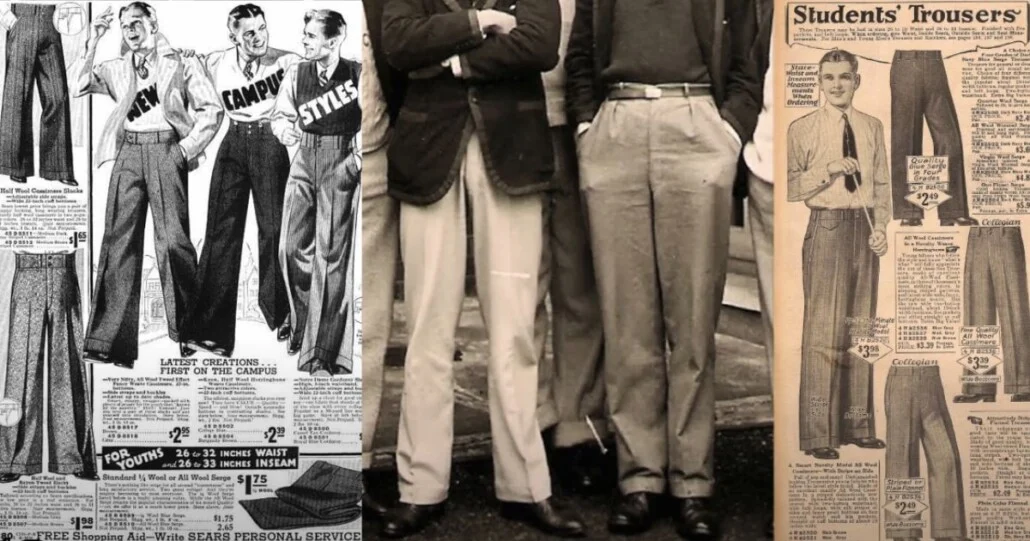The 1920s Fashion for Men, often referred to as the “Roaring Twenties,” was a decade marked by economic prosperity, cultural change, and a newfound sense of freedom. This vibrant period also brought about a major shift in fashion, especially for men. The world had just emerged from the rigid social constraints of the Victorian era and World War I, and the 1920s represented a new age of individuality, glamour, and excess. Men’s fashion in this era became a reflection of the optimism, excitement, and rapid societal change that defined the Jazz Age.
1. Suits: The Pinnacle of Masculine Elegance
The 1920s marked the height of men’s suit culture. Tailored suits were the backbone of a well-dressed man’s wardrobe, and they reflected both sophistication and modernity. The suit’s cut and style evolved during the decade. Early in the 1920s, suits often featured broad shoulders, wide lapels, and a slightly more formal silhouette. As the decade progressed, however, the cut of men’s suits became slimmer and more streamlined, thanks to the influence of designers such as Savile Row’s tailors.
Double-breasted suits, a staple of 1920s fashion, were immensely popular. These suits, with their extra row of buttons, exuded a sense of authority and stature, and they were often paired with high-waisted trousers that gave a strong and structured look. The “morning suit,” typically worn for formal occasions, was another significant piece in the fashion landscape, characterized by its tailcoat design and matching trousers.
2. Shirts and Ties: A New Level of Boldness
Shirts in the 1920s were typically white or light-colored, but men weren’t afraid to experiment with patterns and textures as the decade went on. Pinstriped shirts, often paired with a matching suit, became a popular choice for those who wanted to add a bit of flair to their ensemble. Shirts also became more comfortable, made from lighter fabrics that suited the era’s more relaxed attitude. The stiff, formal collars of previous decades gave way to softer, more natural designs.
Ties in the 1920s also saw a dramatic transformation. Men no longer wore bow ties exclusively for formal events. The necktie, often wide and made from silk or wool, became a key part of everyday fashion. Striped, patterned, and even colorful ties added personality to a suit. The dapper gentleman of the 1920s was never seen without a well-chosen tie that complemented his look.
3. The Rise of Casual Wear: The Sport Coat and Knickers
With the increasing popularity of outdoor sports and leisure activities, such as tennis, golf, and yachting, the 1920s also saw the rise of more casual attire for men. The sport coat, a less formal alternative to the classic suit jacket, became a popular choice for everyday wear. These jackets were often worn with a vest and a pair of tailored trousers or, for a more relaxed look, with knickers (knee-length pants that were slightly baggy and fastened just below the knee).
Knickers were particularly popular in leisure settings and were often seen on men during sporting events or social outings. They paired well with knee-high socks, completing the relaxed yet stylish look. For those who preferred an even more casual style, the polo shirt made its debut, offering a comfortable and sporty alternative to the traditional button-up shirt.
4. Accessories: Defining the Well-Dressed Man
Accessories played a crucial role in completing a man’s 1920s look. The decade saw an explosion in the popularity of hats. Fedoras, homburgs, and flat caps became iconic symbols of men’s fashion during this time. The fedora, in particular, was the go-to hat for most men, whether they were on their way to work or attending a social event. It was often paired with a suit, giving the wearer a sophisticated and confident air.
Another defining accessory was the pocket watch. Though wristwatches were becoming more common, the pocket watch remained a symbol of elegance and wealth. Many men carried these watches on a chain attached to their waistcoat or belt, adding a finishing touch to their ensemble.
Scarves, cufflinks, tie clips, and monogrammed handkerchiefs were also essential parts of a well-dressed man’s look. These small, often personalized details helped to elevate one’s style and conveyed an air of sophistication and attention to detail.
5. Footwear: Polished and Practical
Footwear in the 1920s was a significant part of a man’s ensemble. Leather shoes, often in shades of brown or black, were the go-to choice for most men. The classic oxford shoe, with its clean lines and sleek appearance, was a staple of the era. For formal occasions, men often opted for brogues, which were more decorative and featured intricate stitching.
For more casual occasions, loafers and saddle shoes made an appearance. These shoes were often worn by younger men and were seen as a comfortable yet fashionable choice for social gatherings or relaxed outings. All shoes were polished to a high shine, reflecting the importance of maintaining a neat and orderly appearance.
6. Influence of Hollywood: The Silver Screen’s Impact
The glamorization of fashion through Hollywood also played a crucial role in shaping 1920s men’s fashion. Movie stars such as Clark Gable and Douglas Fairbanks became style icons, influencing the masses with their dapper appearances on-screen. The “silent film stars” were often seen wearing sharp suits, perfectly groomed hairstyles, and the accessories that defined the 1920s look. As a result, many men aspired to replicate the style of their favorite stars, and fashion became an expression of both wealth and personal style.
7. Hair and Grooming: The Slicked-Back Look
A well-groomed man was a symbol of sophistication in the 1920s. The iconic hairstyle of the decade for men was the slicked-back look, often achieved with pomade or brilliantine to give the hair a shiny and controlled appearance. This style was both modern and clean-cut, reflecting the new era’s focus on order and refinement. Some men also sported a more natural wave, while others kept their hair shorter and more streamlined.
Facial hair saw a decline during the 1920s. While mustaches had been common in earlier decades, the clean-shaven face became the dominant look, symbolizing youth, vitality, and elegance. Grooming products like shaving creams, razors, and colognes became more widely available, making personal care more accessible.
8. The Influence of Social Change
Men’s fashion in the 1920s was not just about looking stylish—it was also a reflection of the social changes taking place. The economic prosperity of the decade allowed for a more extravagant lifestyle, and fashion became an expression of this newfound wealth. Additionally, the liberation of women, the rise of jazz, and the growing presence of youth culture led to a greater emphasis on individuality in men’s fashion. The younger generation sought to break away from the older, more traditional styles, favoring bold, more relaxed looks.
Conclusion
The 1920s was a decade of revolution in many ways, and fashion was no exception. Men’s fashion during this period embraced a sense of freedom, boldness, and sophistication. The suits, accessories, casual wear, and grooming habits of the era helped to define a generation that was ready to embrace a modern world full of new opportunities. From the sharp suits to the polished shoes and slicked-back hair, the fashion of the 1920s continues to inspire today’s designers and style enthusiasts, proving that the “Roaring Twenties” were more than just a historical moment—they were a lasting style revolution.

